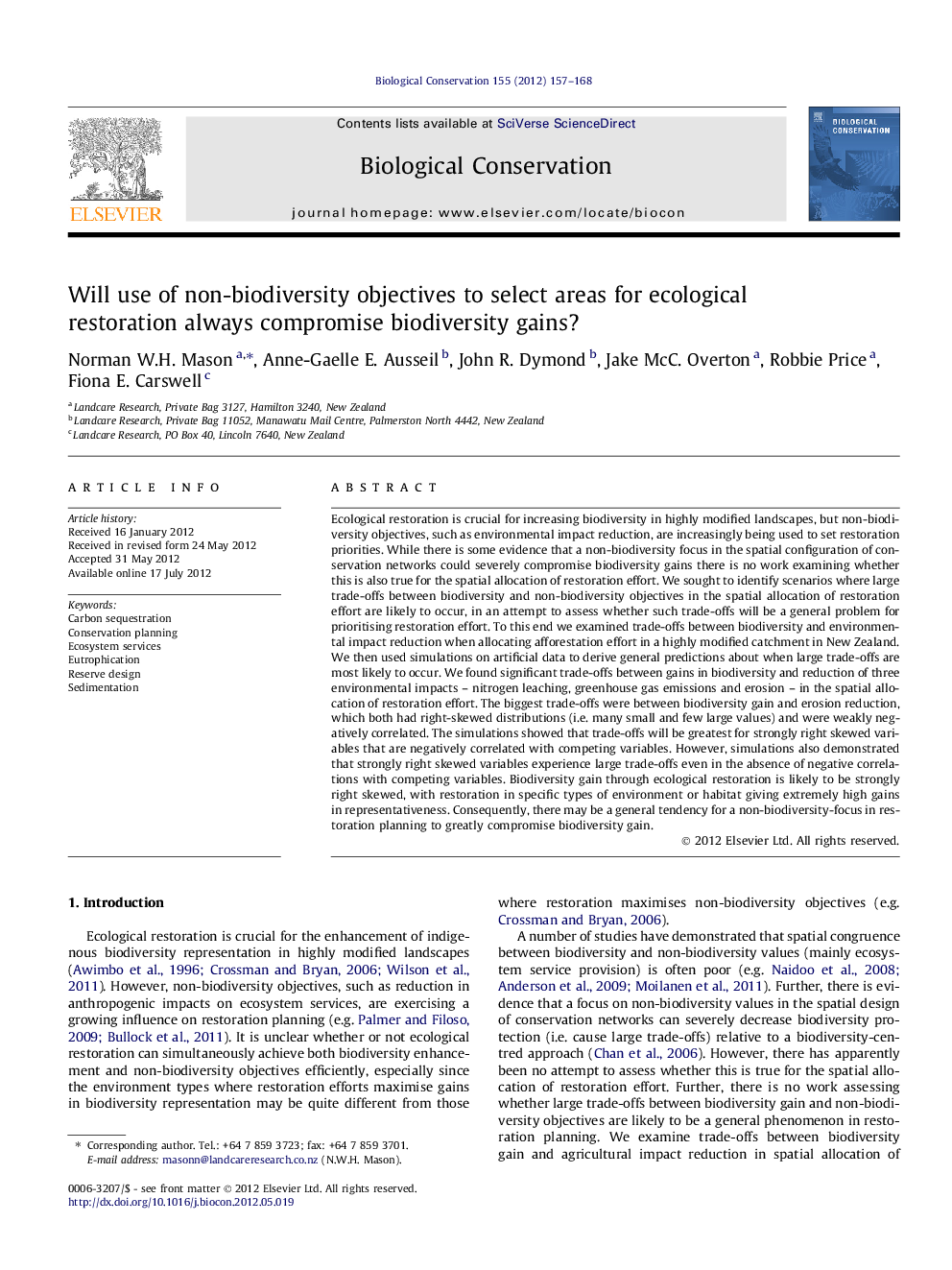| کد مقاله | کد نشریه | سال انتشار | مقاله انگلیسی | نسخه تمام متن |
|---|---|---|---|---|
| 4385117 | 1617946 | 2012 | 12 صفحه PDF | دانلود رایگان |

Ecological restoration is crucial for increasing biodiversity in highly modified landscapes, but non-biodiversity objectives, such as environmental impact reduction, are increasingly being used to set restoration priorities. While there is some evidence that a non-biodiversity focus in the spatial configuration of conservation networks could severely compromise biodiversity gains there is no work examining whether this is also true for the spatial allocation of restoration effort. We sought to identify scenarios where large trade-offs between biodiversity and non-biodiversity objectives in the spatial allocation of restoration effort are likely to occur, in an attempt to assess whether such trade-offs will be a general problem for prioritising restoration effort. To this end we examined trade-offs between biodiversity and environmental impact reduction when allocating afforestation effort in a highly modified catchment in New Zealand. We then used simulations on artificial data to derive general predictions about when large trade-offs are most likely to occur. We found significant trade-offs between gains in biodiversity and reduction of three environmental impacts – nitrogen leaching, greenhouse gas emissions and erosion – in the spatial allocation of restoration effort. The biggest trade-offs were between biodiversity gain and erosion reduction, which both had right-skewed distributions (i.e. many small and few large values) and were weakly negatively correlated. The simulations showed that trade-offs will be greatest for strongly right skewed variables that are negatively correlated with competing variables. However, simulations also demonstrated that strongly right skewed variables experience large trade-offs even in the absence of negative correlations with competing variables. Biodiversity gain through ecological restoration is likely to be strongly right skewed, with restoration in specific types of environment or habitat giving extremely high gains in representativeness. Consequently, there may be a general tendency for a non-biodiversity-focus in restoration planning to greatly compromise biodiversity gain.
Journal: Biological Conservation - Volume 155, October 2012, Pages 157–168